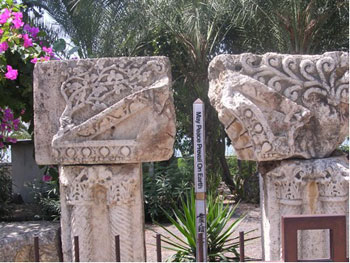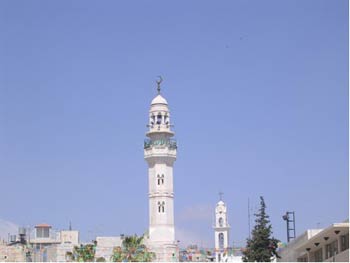By David E. Scharff, M.D.
May 15 and 16, 2007
Wuhan is not known for its sights, and among friends and acquaintances with whom we discussed our trip before coming, only those with experience in international business had spent time here. Others had come to board the cruise down the Yangtze River to the Three Gorges Dam without staying in the city. But we are growing fond of Wuhan. We have been to dinner at General Wu’s house, a grand although now dilapidated mansion, eating spicy long green vegetables and chickens’ feet (and some more palatable food) on the verandah two stories above the street, looking at a sign that read “Endless Midnight: Infinite is Overwhelmed with Emotion” over an abandoned store front. Wu was a powerful South China general early in the 20th century who refused to cede power to the occupying Japanese. So they made him an offer he couldn’t refuse. When he developed a virulent tooth infection, the Japanese insisted he accept the help of their dentist. He died immediately after the dentist’s visit.
Yesterday we tried to come to terms with the difficulty the audience had following our videotapes of an evaluation. The gap in understanding is greater than anyplace we have ever taught. Although we sent transcripts of the interview of the couple ahead for translation so that the audience could follow along, the cultural gap has proved to be too great for the interview to make sense to them without quite a lot of explication. Jill labored bravely to bridge the gap, but only got through eight minutes of this tape. It was dismaying because this has always been our most popular, and most easily understood vehicle for teaching. She changed tactics and had volunteers read the transcript for a kind of scripted role play, but thought that the audience would probably have preferred to do their own unscripted role play! Later we learned that the translation of idioms was part of the problem. For instance, when the woman in the couple begins the interview by telling us, “We have three shrinks between us,” the translation read, “We are three very small people.”
Jill struggled with another discrepancy: Dr. Qijai Shi, our host, had asked us to prepare an advanced curriculum, which we came to feel is what would most suit his interests. But now we can see that most members of the audience have no background in what we are teaching, and need the most basic concepts spelled out clearly.
Jill and I spent the next session consulting jointly to an extremely depressed and frequently suicidal young woman, a hospitalized teacher of Chinese language and literature who had lost her job, she said, because her students objected to her disciplinary methods, and who now only wanted to go home and stay with her parents. A sad situation! Dr. Jun Tong, the head of the Inpatient Unit, reports that this woman is actually much improved after some time in the hospital and several sessions of psychotherapy. Dr. Tong tells us that many of the teachers, themselves with little training in pedagogy, are quite harsh and therefore unpopular. Jill continued her teaching for the rest of the day, including a consultation to a case that was extremely well presented by an experienced therapist, while I was given my day off for a tour or two of the city.
Dr. Wu Xiaojan (who has chosen the English name Rose), a 26 year old woman psychiatrist, is Dr. Shi’s protégée. Graduated from the medical school of Wuhan University two years ago and about to complete her Masters Degree in psychotherapy, she will join Dr. Shi’s staff in July. Her English is excellent. She has been an able translator when Dr. Shi hands over to her, and on this occasion, she was tasked with giving me the tour of the city with a clinic car and driver. We went first to the Guiyuan Temple, an impressive although somewhat shabby sprawling structure that houses 500 painted life sized images of pupils of Buddha, each with a distinctive persona, some serious, some fearsome, some whimsical. In one main hall, a golden image of Guiyuan stands on a heavily decorated alter. A peace garden occupies one corner, and massive reconstruction is still taking place on other parts of the large site. What is most impressive is that this is a working religious operation, with monks teaching and ordinary Chinese coming to pray in various halls in the temple. The whole effect is perhaps marred by a lack of tiptop repair and decoration, but my interest was carried by the fact that I could easily see that despite more than two generations of repression of religion, this place still had day to day meaning for so many people. What we learn as we tour more of China is that the culture has not been dominated by a religious ethic for a long, long time. Although we are used to linking Confucianism and Buddhism with China, the country has been principally secular for perhaps a thousand years. There are active religions, including some Christianity, but the lack of a dominant religious ethic began long before the Communists came to power. Weddings, for instance, take place in restaurants, not churches or temples.
I was not prepared for how impressed I was by the next site, however, because the guide book is dismissive of the Hubei Provincial Museum, saying only that it is dedicated to artifacts excavated from the tomb of Marquis Yi who died in 433 B.C. What an understatement! This is one of the most impressive collections of tomb elements I have ever seen! Three years ago Jill and I saw the newly opened, magnificent “Lord of Sipan” tomb reconstruction in northern Peru when we visited one of our daughters who was working in Lima. This was every bit as impressive: Perfectly preserved bronze serving and drinking vessels, large and small, beautifully preserved arrow and spear heads with crossbows, bamboo spear shafts, full suits of lacquered armor, woven silk, massive group tombs to house those who were required to die with Marquis Yi. The collection of likenesses of animals is stunning, but the elaboration of fanciful animals, of one animal turning into another, of a tree that turns from frog to bird, of graceful antlers arising from the head of a bird is hauntingly beautiful. And most of all, a full orchestra perfectly preserved: a mounted collection of several dozen musical bronze bells, from large to very small along with zithers and wind instruments. Apparently, 2400 years ago, Marquis Yi liked music! The highlight of the visit is the concert. While the ancient instruments are all playable, to preserve the originals, the concert is given on a full replica set playing traditional Chinese music accompanied by fluid, graceful dancers, and a small fillip of modern Western music to show how flexible the orchestra is.
The next day, we woke to a grey rainy sky, an army of umbrellas held over motor scooters, bicycles and pedestrians crossing the huge intersection below our breakfast window. The ebb and flow of humanity rain or shine. We tried to adjust our teaching, to match it more appropriately to the mixture of experience in the audience, focusing on the rudiments of the frame required for therapy, a smattering of attachment theory and the way it could be used through assessment of the patient’s language and narrative, some neuroscience of the frontal lobes as the executive of emotional regulation, and the role of the face and mirror neurons in expression and reading of emotion in development and in psychotherapy.
It is odd to teach about non-verbal communication, when we are feeling that the audience is having such difficulty reading the non-verbal expression of our teaching tapes! On this day, while Jill had her turn to see the monastery and museum I had seen the day before, instead of playing a whole video, I played short segments and told the story of an interview with a couple with sexual difficulty who had delayed their marriage in order to get help. We discussed the role of sexuality in the formation of their bond, and of the trauma each of them had suffered growing up in structuring their relationship and their difficulty. We seem to have hit a better level of understanding for the group – but I didn’t think we managed a really good fit as yet.
Jill returned from seeing the temple and museum to share in conducting an interview of a family of a 17-year-old girl who acts up a good deal and whose declining school performance distressed her and her parents so thoroughly that she ended up in the hospital. It was an entertaining affair. The patient’s English was excellent. The English name she had chosen for herself was Elizabeth (altered here for her privacy), and when I went to ask her to participate in the live, observed interview to which her parents had already consented, she flippantly answered, “No sweat!” and headed down the hall to the interview room. Elizabeth translated (and actually often mistranslated) our comments for her parents, while Dr. Tong then corrected her adolescent attempts to mislead the parents, and we worked for 45 minutes to make an assessment of her ambivalent wishes to satisfy and thwart her parents’ ambitions for her. “All Chinese children are under pressure to live up to their parents’ high hopes for them,” Elizabeth said – and young Dr. Wu confirmed that it is so: places are so scarce in the good schools and the reward for success is so high, that all ambitious families are under enormous pressure. Since 1981, all urban families are held strictly to the one child policy, so that each family has but one precious child who is their hope for the future. (We learned of an exception later in Shanghai where negative population growth has led the government to allow two children.)
What makes things worse for the one child families like Elizabeth’s, is that the parents were usually denied a similar advantage because of the destruction of educational possibilities during the Cultural Revolution when Mao ordered young people to forego education and the children of professional and educated families were sent to the countryside. This happened to the parents of our young guide and translator, Dr. Wu, whose parents have been generously supportive of her growth and education, still paying the now expensive university costs and supporting her in the long slog before she becomes eligible for a salary for the first time later this year. But in the case of Elizabeth, the situation had become sadly complicated. Still, these were dedicated and worried parents who clearly would do whatever they could. And while Elizabeth was flamboyant and provocative, disguising and then flaunting her story of declining performance and erratic behavior over the last three years, she responded to our efforts and steadied down in the interview to show flashes of quite remarkable intelligence and insight. True she fell about on the floor and acted “crazy,” but she responded to limit setting and acted sanely again. At the end, in an oedipal enactment, she told me that she wanted my email (which I did not give) so that she could see me in America in three or four years, and immediately turned to tell Jill that she was beautiful. (Elizabeth had a remarkably young and beautiful mother.) We thought that, despite her hysterical psychosis, she had the potential to make good use of family and individual therapy, perhaps a mild learning disability in math, and a supportive, if baffled, family.
The exhausting day of teaching ended with Dr. Shi treating us and our two young guides to an hour’s foot massage, called “reflexology.” What a comic sight, the five of us lined up in a row in plush armchairs, with four young women and a young man for Jill, kneading, slapping, and massaging our feet, legs and shoulders for an hour until we relaxed thoroughly. Dr. Shi kept worked on a large sheath of papers throughout his foot massage.
May 17, 2007
In the teaching today we tried to make modifications based on the experience of the first three days. Jill began by taking questions, and the discussion therefore was much closer to the level of interest of the group. She had to go over the basic ideas of projective identification and transference, using simplified examples from her practice. Later in the day, we interviewed a middle aged couple while the audience watched by video feed to another floor. The couple was of particular interest because the wife was educated while the husband was not. She used her excellent English to exclude him from direct contact with us. We felt this gave a new version to the dynamic of their marriage in which she had chosen a much less educated husband who she felt was more emotionally available than her strict and controlling parents, only to later reject him because unconsciously he represented her denigrated self. Beginning with the pregnancy that produced their daughter, she had become emotionally provocative and he physically abusive. Later he spent money from his overtime work on prostitutes, resulting in her acquiring a gonorrheal infection. They had settled into a marriage marked by emotional distance and fighting. Both had considered divorce, but neither felt they were likely to find a better partner. Finally a friend of the wife had recommended that they seek psychotherapy. The interview was made immeasurably easier by Dr. Shi’s translation which gave him a role like an additional co-therapist. He and I worked to include the husband on a more equal footing to compensate for the way the wife kept trying to recruit Jill to her point of view. At the end of the interview, Dr. Shi offered to see the couple in marital therapy, and the husband, whom the wife had described as reluctant to come to therapy, seemed willing.
Dr. Shi left our afternoon teaching to meet his German colleague, Wolfgang Senf from the University of Ulm, at the Wuhan Airport. At a grand dinner in a private room in one of several Wuhan restaurants that seats 3000 people and is permanently set up for large weddings, we learned more about the alliance between the German-Chinese Cultural Alliance that has been the guiding hand in the establishment of the Wuhan Hospital for Psychotherapy. Dr. Senf, a psychoanalyst, has had a leading hand in the design of psychotherapy training in Wuhan. He has been coming to China for many years, and to Wuhan several times a year for the last 5 or 6. Bejing is only an enviable mere 9 hours from Frankfurt, so the trip is not more difficult than for us to go to Europe. Dr. Senf has set up psychotherapy training that spans the modalities and models of analysis, cognitive behavioral, and systems therapy, and has come to the conclusion that what is needed is not training in analysis or analytic therapy first and foremost, but basic training in doing all psychotherapy. He has developed a basic curriculum that the first generation of trainees can then implement with his and his colleagues help. In the place of individual personal therapy for the trainees, he offers sessions two or three times a year in “self awareness” in which he consults to their own process of self-examination which should continue in the intervals between his visits. The supervision and personal sessions Dr. Senf gives are augmented by local supervision given individually and in groups by Dr. Shi. The design stems from Dr. Senf’s conclusion that standard training and more intensive therapy and supervision are simply not possible in China at this point in the evolution of dynamic therapy, so that the question is comparable to one Winnicott posed in conceptualizing the provision of therapy to the large numbers of children seeking help — not how much can be done, but how little need be done to get the job done. This design contrasts sharply with the discussion Jill had with Elise Snyder before we came to China. She has been working in China for more than 20 years, and currently has a handful of Chinese professionals in analysis at very low fees in a program in which American analysts donate time and accept these fees. The fees cannot be taken out of China, she told Jill, so these analysts have to come to China to spend the money. The scope of influence seems entirely different.
The more I talked with Dr. Senf, the more I was impressed at the complexity of the problem of jump starting psychotherapy in China. The professional audience is eager and naïve. But they won’t wait the many years it would take to slowly build analytic psychotherapy skills to the level of practice of Europe and the Americas. What will practice and training be like in the wake of this kind of short-cut training? Will the level of practice ever reach even that of our mid-level trainees, or will it become a kind of analytically informed counseling? I felt that I had to withhold conclusion, and perhaps after experience in Shanghai at the conference Dr. Shi had partnered, I might feel I knew more about the problems.
May 19, 2007 Beijing
We have spent the last 2 ½ days touring in Beijing after a morning flight, met by Martin, our guide with Mr Jin, the driver of a Chinese make car rather like a down-market Lincoln Town Car. It was a hard working three days of touring, all the sights of the city including Tiananmen Square, the Forbidden City and the state precious objects, a teeming city now surrounded by six ring roads, construction everywhere in anticipation of the 2008 Olympics, more subway lines, highways, high rise apartment buildings, and ever more cars where there were almost none fifteen years ago. But the pollution is not bad, nothing like Wuhan, perhaps because, as Martin told us, industry has been moved out. The architecture of the years the Russians were building for the Chinese, and even after they left with bad feeling, is extremely . . . well, “pedestrian” would be high praise. It’s ugly and rapidly decaying in the way East Berlin is drab, even the relatively expensive apartments. Prices escalate the closer to the center of town, beginning with the 4th ring road, and by the 3rd ring road, only wealthy foreigners can afford the new apartments being built everywhere. The posh Peninsula Hotel doesn’t have the panache in its management that we have experienced in, say, Sydney, but it’s the best that is available we assume, given that the Kennedy Center Board is also staying there during their visit to Beijing.
The first day we visit the Temple of Heaven, a drum tower with ancient timekeeping drums and cymbals, and a bicycle-rickshaw visit through the part of Old Beijing that is being preserved and spruced up for the Olympics. A 73 year-old woman still lives in one of these ancient, not very attractive houses, not wanting to move. She keeps occupied by serving tea to visitors like us, and tells us about her three children, in their forties, each a high level professional with, of course, only one child apiece. They would never live in this old neighborhood, preferring the new high rise apartments, but they visit her and she them – especially when she took care of their newborns some years ago. I’d guess that in another ten years, this neighborhood will be the object of gentrification like Soho or Georgetown, and prices will skyrocket at the chance to get away from the anonymous new apartments.
Yesterday was the Ming Tombs, wonderful treasures from the Ming rulers, and the Great Wall. We climbed one portion of the 6000 mile national treasure, reconstructed after its destruction several times, most lately by the European assault on China in the 19th century and by the Japanese devastation of so many things from the 1930s until the end of World War II. This is true also of the Forbidden City where the Emperors lived from the beginning of the 15th century in the Ming and Quin dynasties, reconstructed after. But these, like Tiananmen Square, are not beautiful. Covered in grey brick, they are impressive, with rooms of precious objects and thrones, awe inspiring, but not beautiful. But there are wonders: the carvings of jade of all colors and from intricately small to large and towering landscapes, and especially a collection of clocks, mostly from Europe, with the most wonderful detail in all sorts of precious materials – gold, enamel, porcelain – and the most wonderful clockwork: the motions of the solar system, varying musical accompaniments to the hours, and one European looking scribe sitting at a desk who writes Chinese calligraphy of eight characters on fresh sheet of paper when set in motion. The Dowager Empress who reigned at the same time as Queen Victoria, and who is roundly believed to have been a selfish and cruel ruler, had a passion for clocks, and collected Chinese and European clocks that are marvels of the world.
This empress also loved the summer palace an hour’s drive from Beijing. Built around a large and wonderful man-made lake, the woods, the Buddhist pagoda tower, and most of all, the painted covered gallery along the side of the lake with thousands of painted images of myth, animals, birds, and country life are one of the most wonderful sights anywhere. The paintings line the crossbeams, the ceiling, and the outsides of the picture gallery walk, with occasional gazebos with stepped ceilings, all painted brightly. The Summer Palace is a beautiful, relaxing park, soon to be made easily accessible from downtown Beijing when the new subway line is finished for the 2008 Olympics.
Beijing is not itself beautiful. But it is teeming with a large and growing population, many of whom seem increasingly prosperous and middle class, growing numbers of tourists from elsewhere in China and abroad. Mixed in with this phenomenon of a seemingly middle class city, there remains a deference to Chairman Mao, at the same time there is gratitude to Deng Xiao Ping for reversing the destruction of the Cultural Revolution that, from 1966 to 1976 when Mao died, disrupted all intellectual and organized life in China, killed millions, kept people from going to university, and kept a generation from learning anything that would enable them to earn a useful living. Only in the last 15 years, has China opened up to the economic and technological progress that has brought it the rapid economic and intellectual gains, developed its enormous economic potential, and brought it to the world’s attention as an emerging presence on the world stage – and fueled it’s interest in psychotherapy.








